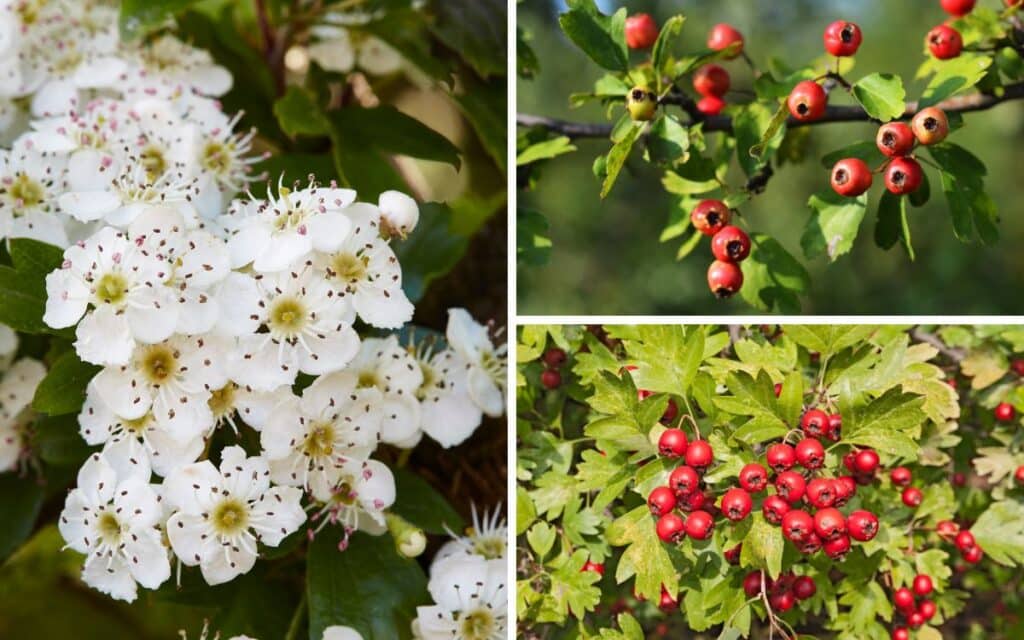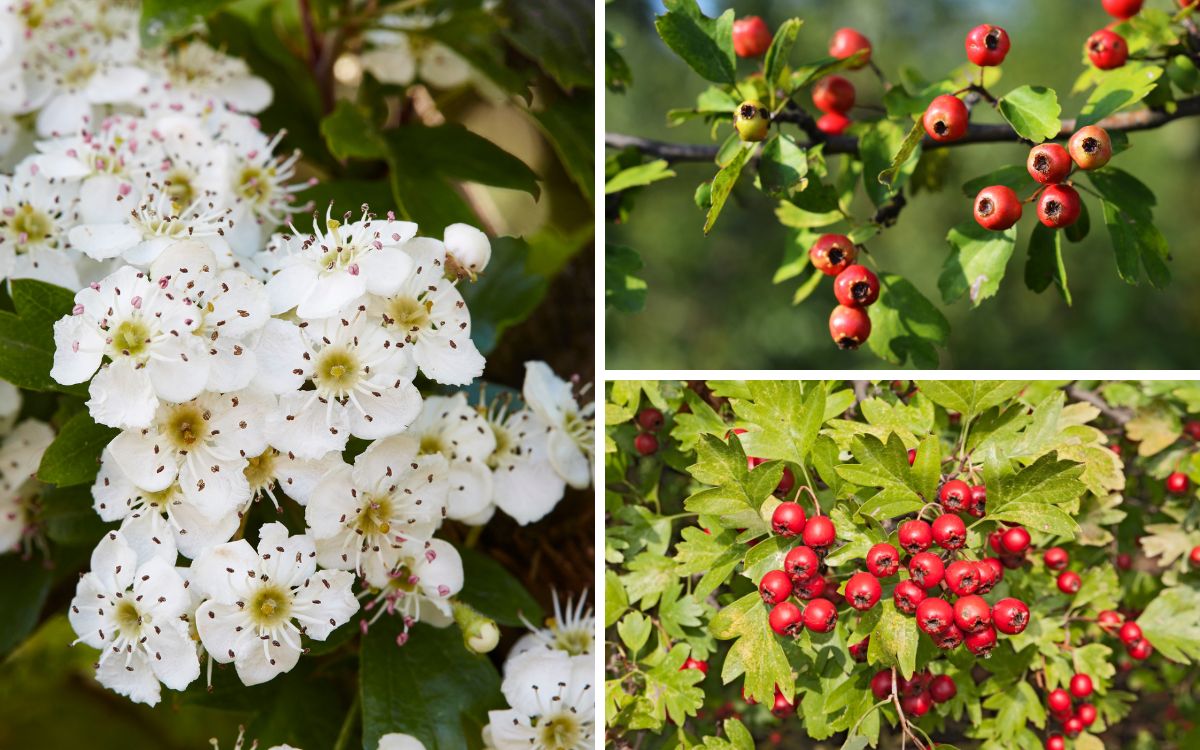Discover the mystical secrets and folklore surrounding the hawthorn tree, a revered presence in the British and Irish countryside

The hawthorn tree, found in the corners of the British and Irish countryside, is a botanical marvel that brims with folklore, magical uses, and spiritual significance.
Known by many names – May Tree, Fairy Thorn, or Whitethorn – this thorny shrub holds a storied place in the myths, traditions, and magical practices of these lands.
1. The Sacred May Tree
Hawthorn trees, also known as May Trees, hold a prominent place in May Day celebrations across the UK and Ireland.
When their white blossoms burst open in early May, it signals the arrival of spring, making them symbols of fertility and new beginnings.
Traditionally, people would gather hawthorn branches to create “May Bushes” outside their homes, decorated with wildflowers and ribbons to welcome the season.
However, bringing hawthorn indoors was considered a grave mistake, thought to invite misfortune or even death – a belief rooted in its association with the faerie world.
2. A Gateway to the Fairy Realm
The hawthorn is intimately connected with the faerie folk in Celtic and Irish folklore.
These trees are believed to serve as portals between our world and the mystical realms of the faeries.
Cutting down a hawthorn tree was thought to incur the wrath of these magical beings, leading to dire consequences such as illness, bad luck, or even mysterious deaths.
To this day, lone hawthorn trees – often standing isolated in fields – are avoided or left untouched, with tales still circulating about curses befalling those who dare disturb them.
In 1999, construction workers in Ireland even rerouted a major road project to avoid removing a single “Fairy Tree”.
3. Warding Off Evil Spirits and Negative Energy
Hawthorn has long been used as a protective charm. Planted near homes or woven into hedgerows, it was believed to shield against evil spirits and dark forces.
Branches and thorns were placed above doors and windows to prevent malign spirits from entering, and hawthorn twigs were carried as amulets to ward off curses and harmful magic.
The phrase “By Oak, Ash, and Thorn” refers to the trio of sacred trees – oak for strength, ash for healing, and hawthorn for protection – believed to hold power over the faerie realms and offer divine safeguards.
4. A Tree of Love and Romance
The hawthorn is often associated with love and marriage.
In ancient Greek and Roman ceremonies, hawthorn blossoms crowned brides and were woven into bridal bouquets, symbolising chastity and happiness.
The tree’s connection to love endures in magical traditions today; hawthorn branches are used in love spells, to enhance romantic relationships, or to foster emotional healing.
Its blossoms and berries can be added to charm bags or infused in potions to attract love and deepen emotional bonds.
5. A Healer’s Ally
Known for its remarkable medicinal properties, hawthorn has been used for centuries to treat heart conditions, such as high blood pressure and palpitations.
Modern herbalists continue to use its berries, flowers, and leaves to support cardiovascular health and improve circulation.
In addition to its physical healing properties, the hawthorn is believed to offer spiritual benefits, fostering emotional balance, promoting courage, and easing anxiety.
Its essence is often used in flower remedies to help people open their hearts and find peace.
6. Hawthorn and Death
Hawthorn’s connection to both life and death is a recurring theme in British and Irish folklore.
The tree is linked to the crown of thorns worn by Jesus during the crucifixion, embedding it deeply in Christian lore.
Its flowers emit a faint scent reminiscent of decaying flesh, due to the chemical trimethylamine, which also forms in decaying tissue.
This eerie aroma only adds to the tree’s reputation as both a symbol of beauty and a harbinger of doom.
7. A Talisman for Luck and Protection
In many regions, people have long believed that hawthorn trees bring luck and protection to their homes.
In Somerset, it was common practice to bend a hawthorn branch into a globe, hang it in the kitchen to bring good fortune, and then burn it on New Year’s Day to ward off evil.
Similarly, wearing a sprig in your hat was thought to protect against lightning strikes and ensure safety during thunderstorms.
8. A Warning Against Witches and Curses
During the medieval period, hawthorn’s thorns were believed to protect against witches. It was often planted in hedgerows or around farmhouses to keep witches from crossing the boundary into human dwellings.
In Serbia, hawthorn stakes were reputed to be the best weapon for impaling vampires, underlining its powerful protective reputation against all things dark and otherworldly.
9. A Source of Practical Magic
Beyond its mystical properties, the hawthorn tree offers a variety of practical uses. Its wood, known for its density and fine grain, has been used to craft tools, walking sticks, and even divining rods. The berries, or “haws”, are often used in jams and jellies, while its leaves can be made into tea to aid digestion or soothe sore throats.
Even today, herbalists and hedge-witches use hawthorn for its beneficial health properties and its symbolic power in rituals.
10. The Glastonbury Thorn
One of the most famous hawthorn trees is the Glastonbury Thorn, a tree said to have originated from a staff planted by Joseph of Arimathea, who, according to legend, brought the Holy Grail to England.
This unique hawthorn flowers twice a year, in May and again around Christmas.
During the reign of James I, sprigs from the Glastonbury Thorn were sent to the monarch each year as a symbol of renewal and divine blessing. Today, it stands as a fascinating example of a tree that bridges Christian and Pagan beliefs.
From its associations with faeries and protection to its role in healing and romance, the hawthorn tree is a truly mystical presence in the landscapes of the UK and Ireland.
Whether encountered on a springtime walk or at the centre of a tale of enchantment, it remains a symbol of the magic that endures in the natural world.
So next time you pass a hawthorn, pause for a moment – who knows, perhaps you might catch a glimpse of a fairy or feel the protective energy that has surrounded this remarkable tree for generations.
Have we missed customs or superstitions you know about this tree? Tell us in the comments section below!
Read more about British trees folklore on Spooky Isles with our article, British Tree Folklore: What You Need To Know



